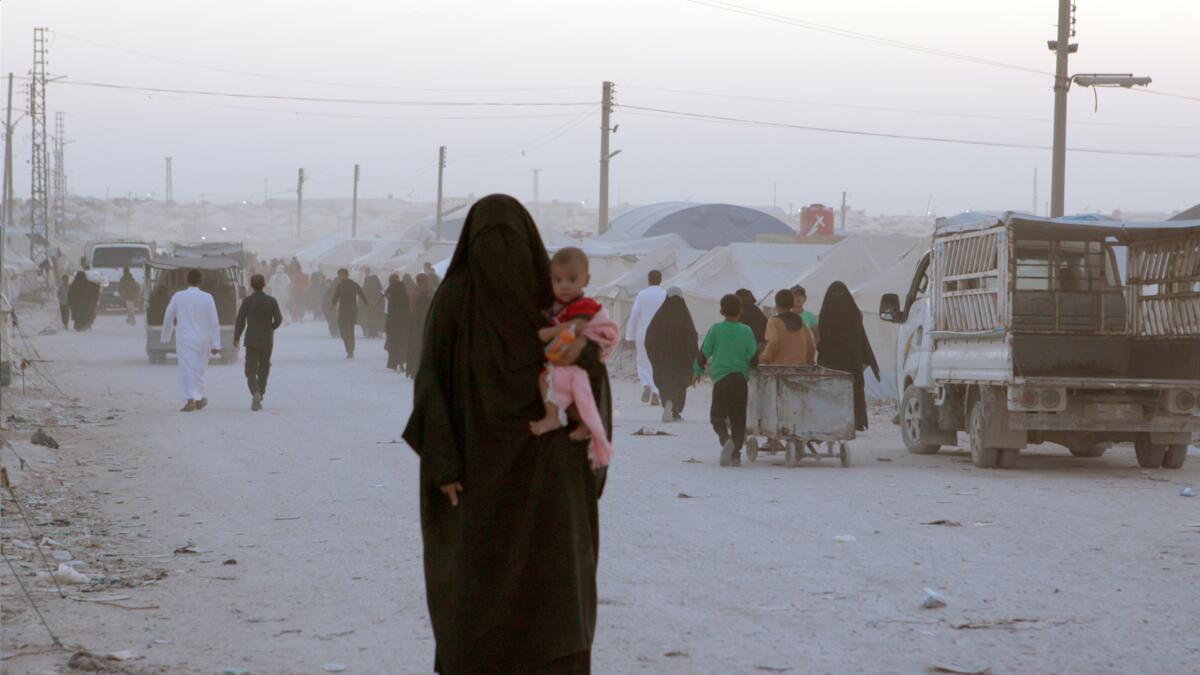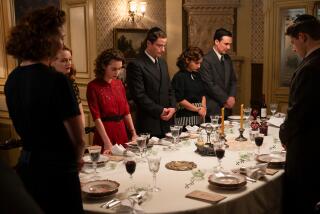Review: Heroes on both sides of the camera in documentary âSabayaâ

The Times is committed to reviewing theatrical film releases during the COVID-19 pandemic. Because moviegoing carries risks during this time, we remind readers to follow health and safety guidelines as outlined by the Centers for Disease Control and Prevention and local health officials.
The heroism of the subjects of âSabayaâ is immediately clear from the documentaryâs opening scenes. In Hogir Hiroriâs harrowing film, a group of Syrians struggles to rescue Sabaya: women and girls who have been kidnapped by ISIS. But the bravery of Hirori himself is equally clear; the filmmaker embedded with the rescuers to obtain heart-stopping footage amidst night raids, car chases and hails of bullets. Hiroriâs approach never calls attention to the man behind the camera, instead focusing on the efforts of his subjects. Itâs impossible not to recognize the courage both onscreen and off- in âSabaya.â
Radio announcements proclaim that ISIS, also known as Daesh, has been defeated in Syria. However, the threat of violence continues â for both the Sabaya still held captive and for the volunteers from the Yazidi Home Center who try to liberate them from the notoriously dangerous internment camp Al-Hol. Five years before the film begins, Daesh not only killed thousands of Yazidis in Iraq but also kidnapped and trafficked women and girls over the border into Syria to be converted to Islam and abused as sex slaves.
Now, Mahmud, Ziyad and others at the Yazidi Home Center work to extract the survivors from Al-Hol, their only tools a handgun and a cellphone with poor receptions. Theyâre aided in their rescues by âinfiltrators,â women â some of whom are former Sabaya â who go undercover in Al-Hol. However, the labor isnât complete once theyâve escaped the camp. Mahmudâs wife, Siham, and his mother, Zahra, help the women and children emerge from the trauma and return to what remains of their families and lives.
Urgency permeates every moment of âSabaya.â The filmâs first moments drop us directly into the action, and it never lets up for 90 minutes. There is sometimes a lack of clarity for the audience on exactly whatâs happening, but the momentary confusion mirrors the hectic nature of the volunteersâ efforts. Mahmud constantly works, spending every moment trying to save every person he can â often at the expense of time with his family â knowing that each moment away from the mission might cost someone their freedom or their life.
Hirori is credited as director, cinematographer, editor and producer, and though the Swedish-Kurdish filmmaker is never directly seen onscreen, we feel his presence as he captures the experience of these people, shooting through a camera hidden in fabric or getting footage from their car as they try to outrun pursuers at night. âSabayaâ zeroes in on Mahmud, his family, Ziyad and the infiltrators, as well as the survivors, revealing their bravery for the viewer at every moment â but you have to marvel at Hiroriâs work too. With âSabaya,â we witness documentary filmmaking at its boldest; we find hope in seeing not only the triumphs of the Yazidi Home Center but also what the medium can do.
âSabayaâ
In Kurdish and Arabic with English subtitles
Not rated
Running time: 1 hour, 30 minutes
Playing: Starts July 30, Laemmle Royal, West Los Angeles; Laemmle Pasadena Playhouse, Pasadena
More to Read
Only good movies
Get the Indie Focus newsletter, Mark Olsen's weekly guide to the world of cinema.
You may occasionally receive promotional content from the Los Angeles Times.










